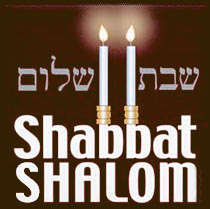Masei
Much of the start of Parshat Masei discusses the forty two stations that the Jews stopped and encamped in the wilderness during their forty year stay, prior entering Israel (Bamidbar 33:1-49).
The forty two stations corresponded to Hashem's ineffable name.
The stations are listed in the order which they stayed in. Just before the sin of the spies (which we learned in Parshat Shelach (Bamidbar 13:27-29)), the Jews had encamped at 14 stations in their first year in the wilderness. We also learn that in the last year in the wilderness, the Jews encamped at eight different stations which was the fortieth year.
This means that in the 38 years between, the Jews encamped in 20 stations.
They encamped in many places, some of the stations alluded to events that took place there or took place in Jewish history. At Sukkot, Hashem began to shelter the Jews with seven clouds; at Mara, there was an oasis featuring bitter water (Shemot 15:23).
Refidim was their 11th stop, it was a place where they grew week in Torah which is eluded by the name. The 26th stop was at Chashmona, a place alluding to the Hasmonean family featured in the Chanukah story.
One of the reasons why the Torah went to great effort to discuss the listing of the stations was to show that their wanderings were dictated by a definite spiritual plan.
The Parshah stresses how much of a great positive mitzvah it is to live in the land of Israel (Ramban), furthermore the Talmud states how important living in the land is and the prohibitions against leaving Israel (Ketubot 110b).
The Parshah then progresses describing how Hashem commanded the Jews to drive out the nations when they were to enter the land of Israel, as many of these nations were steeped into idolatry and even worse matters (Bamidbar 33:55).
Next up, the parshah then describes the land borders and how each of the lands were to be divided (Bamidbar 34:1-15). The land was divided into tweleve portions, one for each tribe, among the twelve the tribe of Levi was excluded and Ephraim and Menashe had seperate shares in the land (Bava Batra 117a).
We then learn that the Levite tribe were to dwell in forty eight different cities scattered around Israel (Bamidbar 35:1-8). The Levites were the Torah scholars, they were meant to exemplify Torah life in the land of Israel and shine it to the rest of the tribes. Six of these forty eight cities were to become cities of refuge for people to live in. A city of refuge (Bamidbar 35:9-34) would shelter an inadvertent murderer from his pursuer (the man who is closest relative of the victim). It would protect the murderer from any harm (Makkot 9).
The inadvertent murderer would be released from the City of refuge with full protection when the Kohen Gadol would die (Makkot 11). Every murder taking place in Israel would be partly blamed on the Kohen Gadol, as he should have made more effort to make a more potent prayer on the Yom Kippur day, in the holy of holies when praying for the Jewish nation's atonement from their transgressions during the year. His death would provide atonement for the Jews.
An inadvertent murderer must live in the City of refuge. Since the Levites were to live there, they would be able to teach much of the Torah they knew to these people. The City of Refuge was both a kindness and punishment to the inadvertent murderer. The kindness was that it would protect him from his avenger however it was a punishment as he would have to separate from his family and live in a totally different location.
The marking of the roads leading to these cities were essential to be implemented, since if the killer did not know where he was running to, the avenger could find him and attack him, so in order for the killer to enter the Refuge City safely, clear road markings were essential (Makkot 10)! The idea in a way teaches us that if we ever have guests coming to our houses or they are travelling to our cities, we should give them proper directions to arrive at the destination and escort them out when they are departing in a very safe manner for them to return to where they came from!
The Torah then relates a warning how one should not let a deliberate murderer escape with his life.
The Parshah concludes on the topic of Tzelophchad's daughters, which we learned about in Parshat Pinchas, how they were to inherit their fathers share in the land (Bava Batra 118)!
This Dvar Torah is dedicated to the refuah shelaima of Leah Bat Perel Merel who has been suffering from health issue's.
Have a great Shabbat, Michael Zaroovabeli from the Ohr Sameach Yeshiva in Israel.

 Share on Twitter
Share on Twitter Visit our Facebook page
Visit our Facebook page